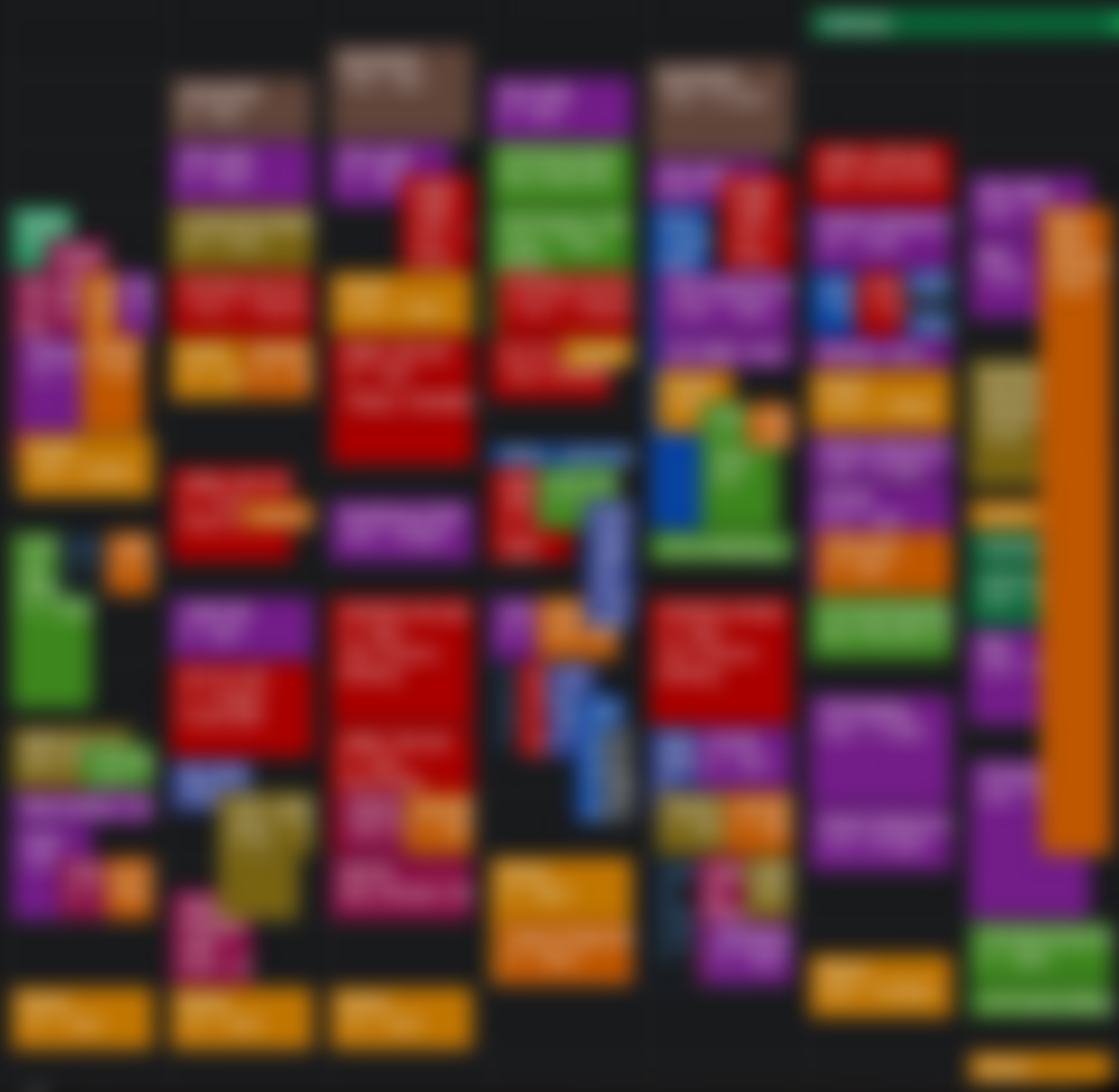Blog > Extreme Timeboxing
Extreme Timeboxing
Managing every minute of time
780 words, ~ 4 min read
perspective
Timeboxing is a productivity technique meant to maximize efficiency by mapping every block of time to an activity or task. It's an extension of Parkinson's Law, the idea that work expands to fill the time available for its completion.
I was taking a lot of classes last semester and involved in a variety of other activities, so I decided to try it out.
Here's a blurred example of what a calendar would look like (Google Calendar, with a dark mode Chrome extension):

Note that some of the calendar can be disregarded, specifically the overlaps - the large orange, dark red, and beige calendars are club events, some of which I did not go to.
Everything was categorized into a specific categories: classes, deadlines, events, food, gym, to do, etc. Each had distinct colors, so that at a quick glance I could tell what was keeping me busy. A lot of red in a week would indicate that I had a lot of class related work, perhaps a midterm and associated studying. A lot of purple would indicate I had to do a lot of work personally. A lot of orange would indicate a lot of cooking for that week. And so on.
There are some blanks and gaps, usually after dinner. I didn't want to track time to that detail to the point that it became intrusive or annoying to update. There was a good amount of "unstructured" time in which I could do whatever I wanted, usually scrolling away on my phone.
There are 2 components to this process:
- Planning: a forward-looking process to allocate future time
- Updating: a backward-looking process to update allocations with reality
The updating process improves the accuracy of the planning process - a feedback loop. This is crucial to the success of timeboxing; else, it's just a schedule with low predictive power.
I also maintained an active to-do list, on Microsoft To Do since it integrated with my computer and phone well enough. I would add tasks to the list as they came up, and then allocate time to them in the calendar in the first few minutes of any work period.
There was a two week span where I was particularly busy and had nearly no gaps in my schedule - around October 15 to October 30. In this time, I had:
- A guest lecture on the 25th (requiring me to get various approvals, make slides, and do dry runs)
- A midterm on the 19th
- Another midterm on the 30th
- A project to work on with a design review on the 20th
- A CalHacks workshop to present on the 28th (make the app, solution, slides)
This was in addition to an already busy schedule - having to cook, go to all my classes, and do my regular teaching. I realized this around 2 weeks before, so I took some time to watch more movies then usual. Once the storm arrived, it was every minute closely accounted for - even for tasks like doing the dishes. A huge component is the sheer cognitive load of having to manage multiple tasks and deadlines; with timeboxing, I was able to forget about everything and just focus on what the next task was.
Findings
- Productivity. During crunch time, when there's a lot of things that are due soon with high importance, I was able to allocate time in a very focused manner to help me figure out what I needed to do.
- Awareness. I became cognizant of what I was spending my time on, and how much time I was spending on it. I started to schedule in time to do things like watch movies or play games, with a clearly defined start and finish. It also felt bad to leave blocks of time empty knowing that I could be doing something.
- Logging. For many of the activities I was involved in where I needed to log hours or give updates, I could go back and precisely see how much time I spent on what items.
- Flexibility. I could easily move around blocks of time to accommodate for unexpected events or changes in plans. This happened quite often - perhaps my roommate was in the shower so I couldn't, or the laundry wasn't working.
These days, I'm busy, but not quite as busy, so I've eased up a bit on the rigor of timeboxing. I still maintain the list and the boxes, just not to the same level of detail. When things pick up, I'll be ready to go back to it.
Found this interesting? Subscribe to get email updates for new posts.
First Name
Last Name
Previous Post
The Decline of Big Budget Blockbusters